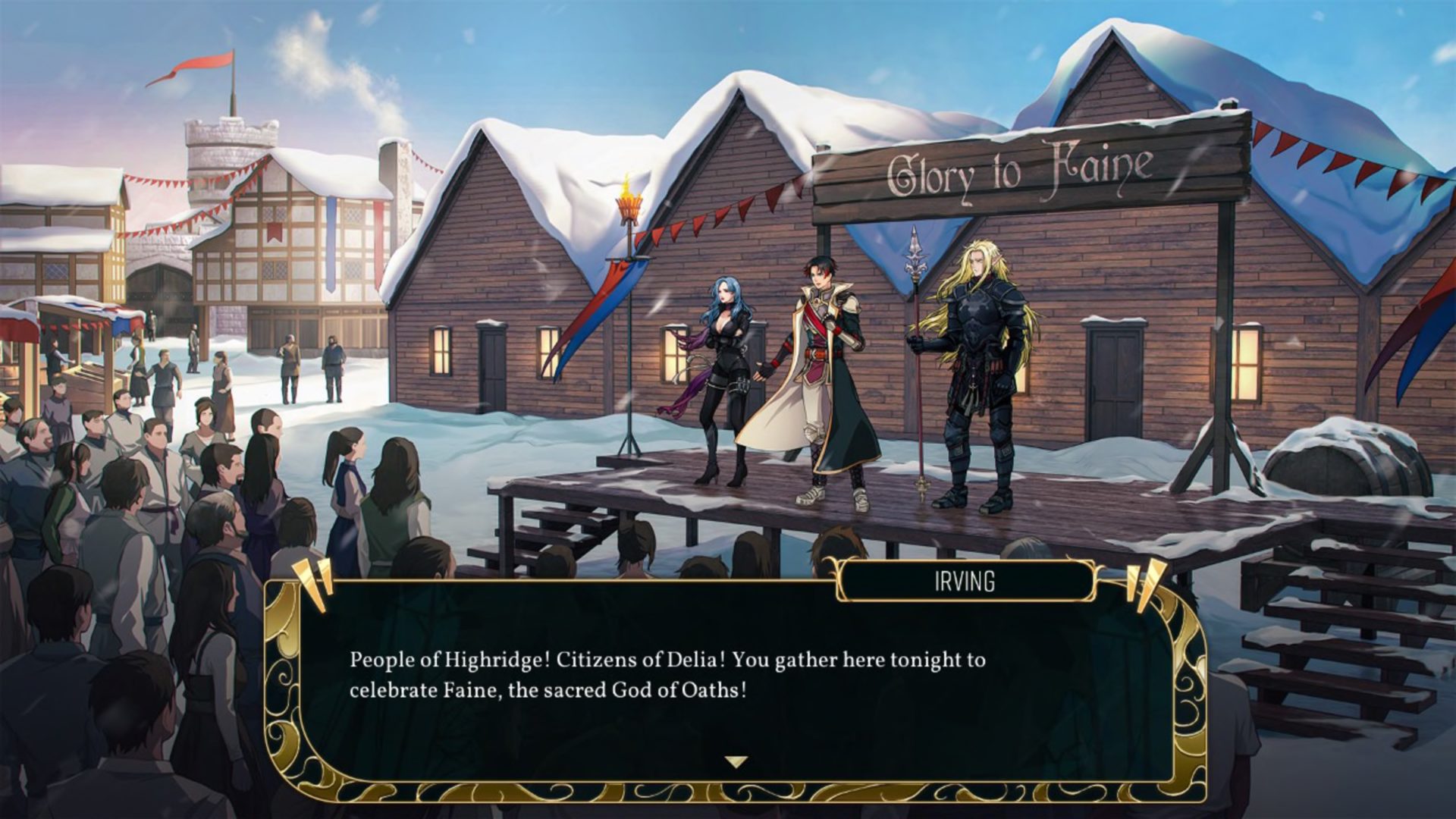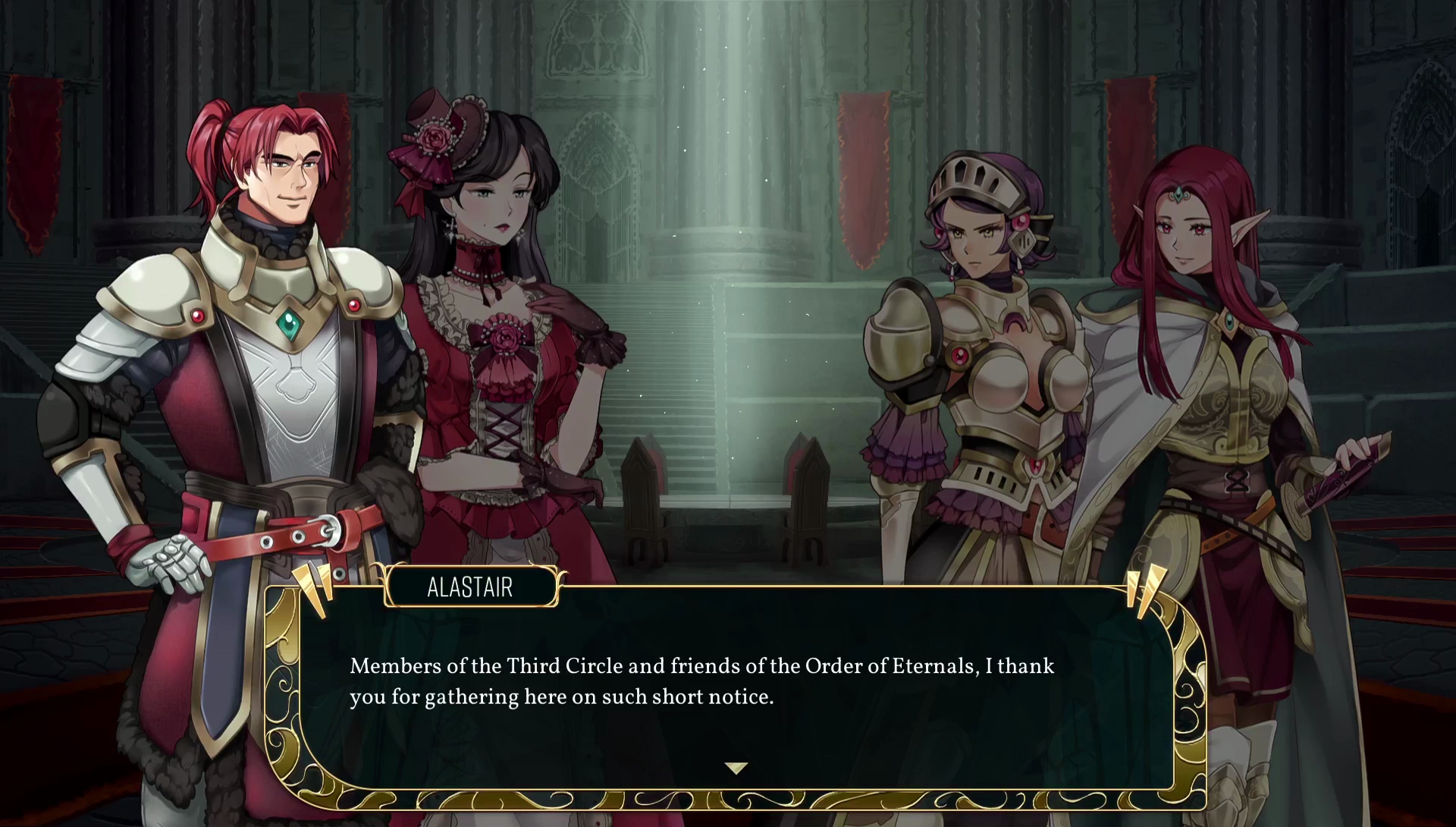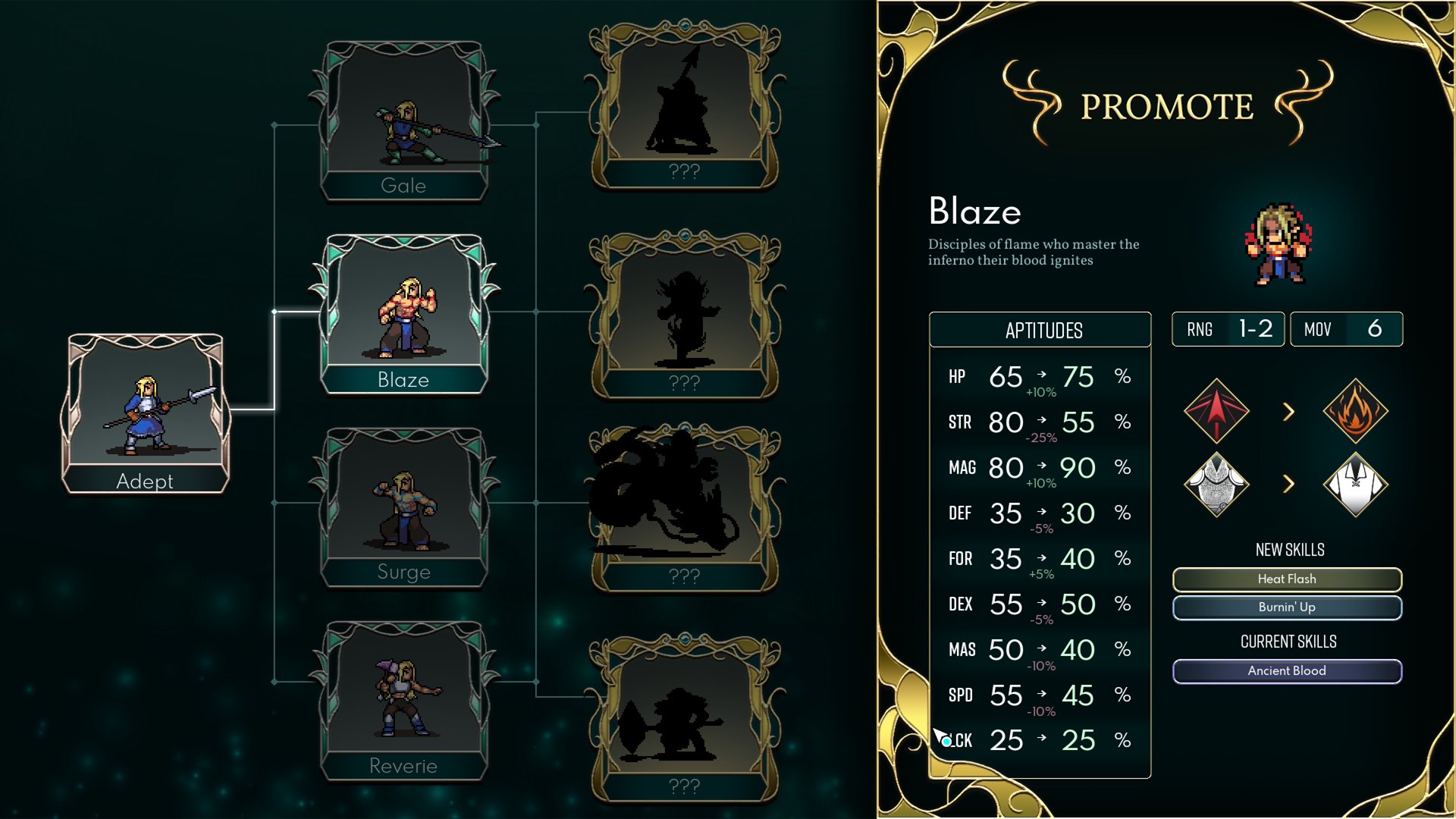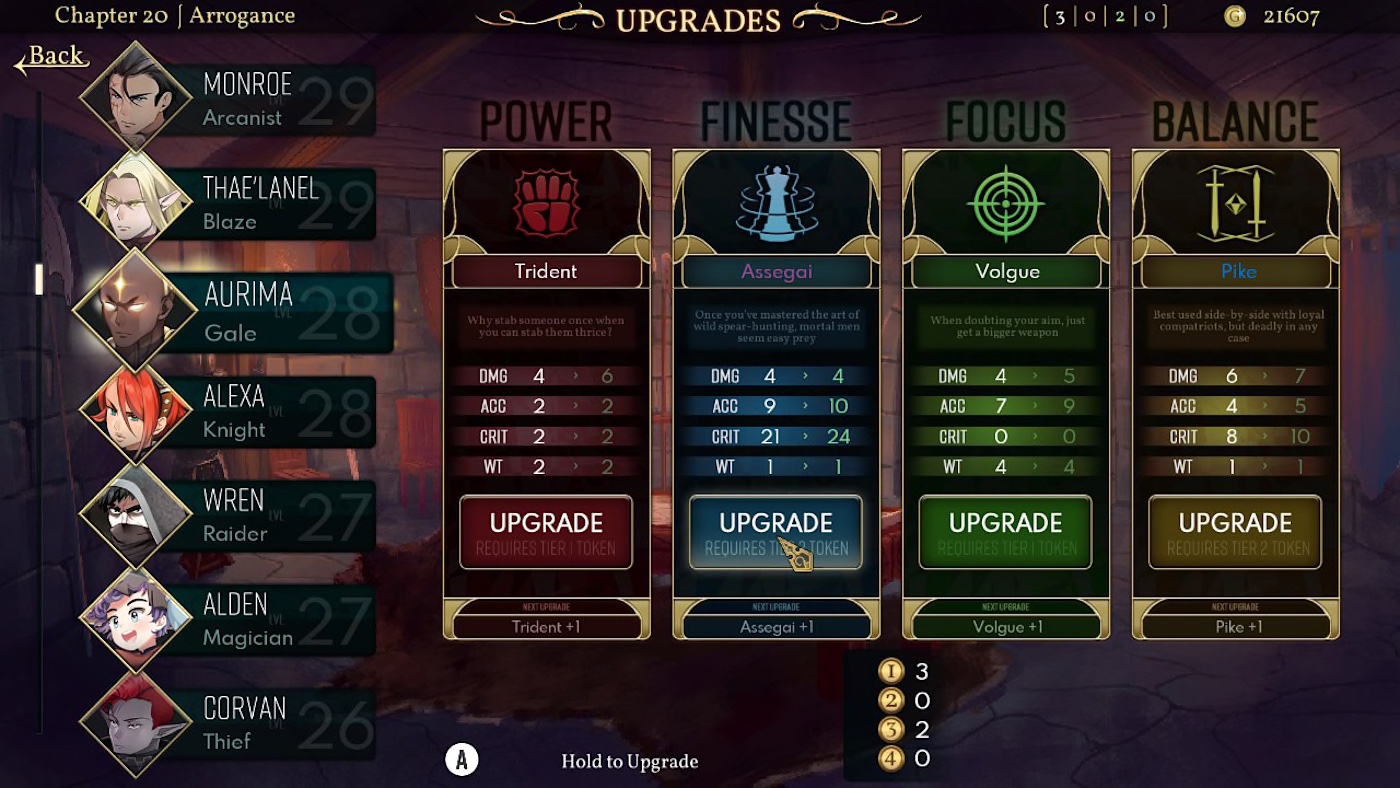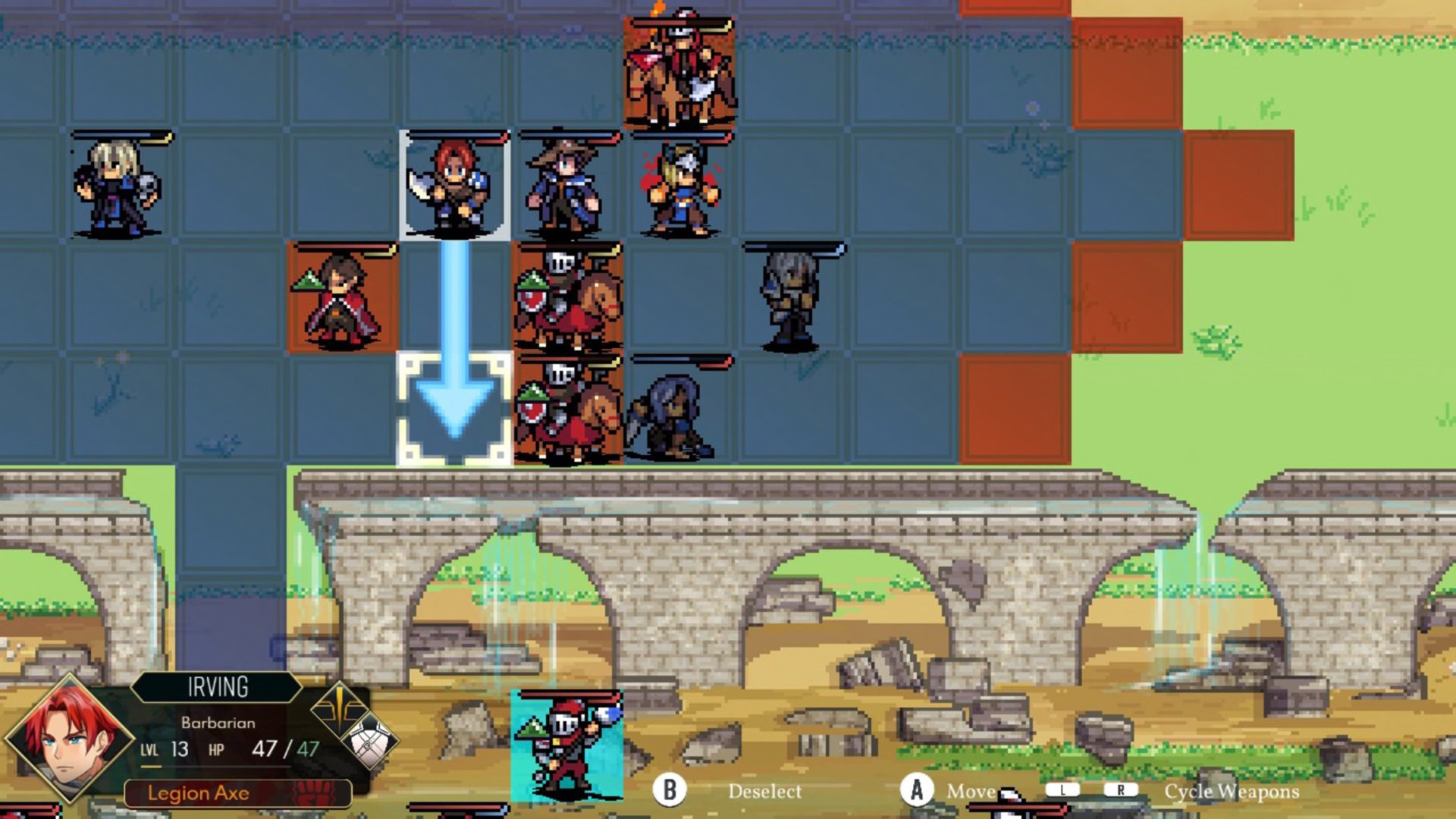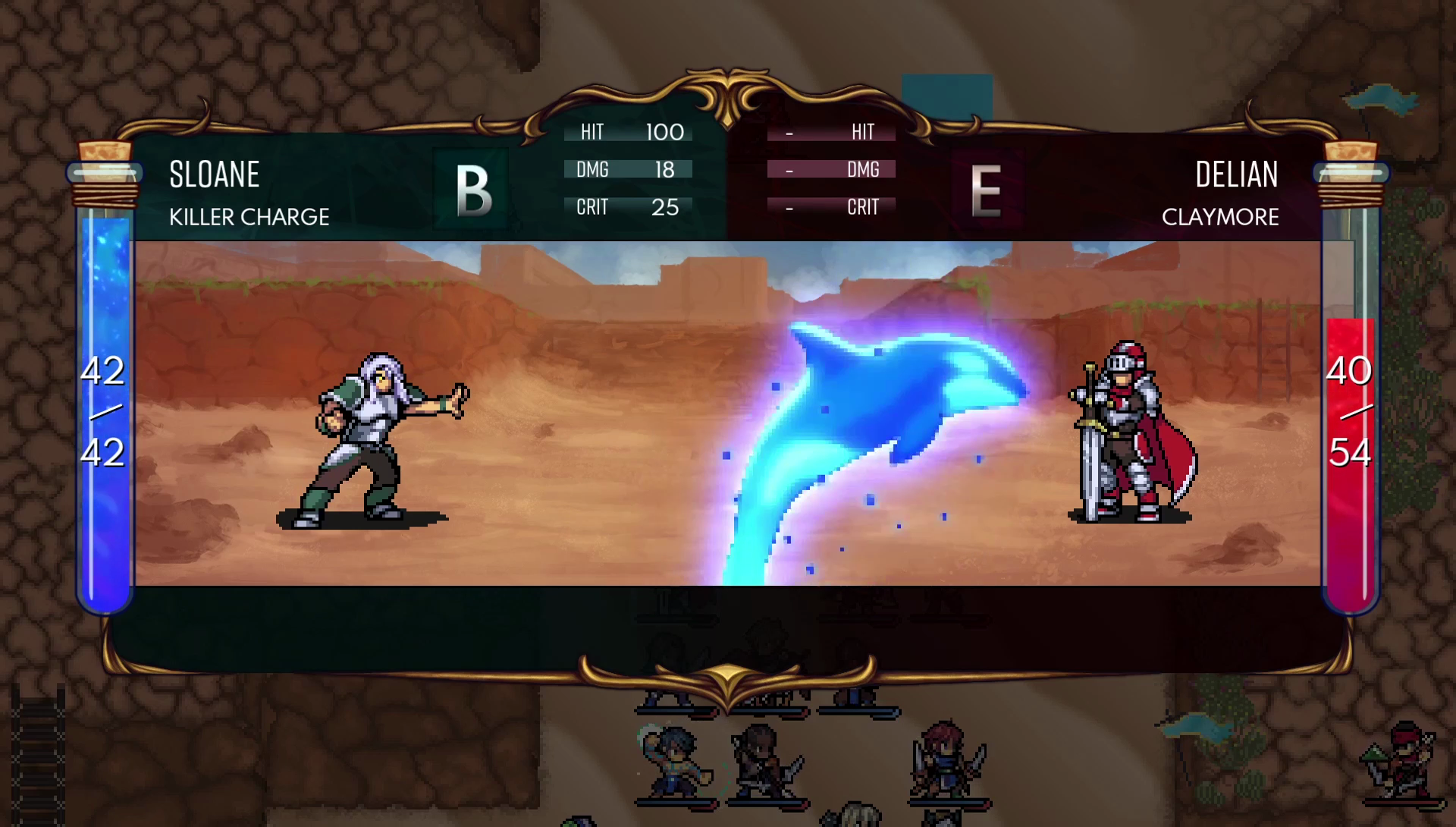The real enemy is not the AI, it's the UI.
Despite the warnings, I judge books by their cover all time. That’s how I know whether I’m the target audience. If the cover features a woman in an ornate dress being held by a smoldering Fabio type, that book is not for me. If the cover features a sword-fighting skeleton or the words “Don’t Panic” printed in large friendly letters, that book is for me.
Dark Deity doesn’t have a cover, but a quick glance at the key art or any screen captures made it clear that was a game I needed to check out. I’m an old-school Fire Emblem fan, and it’s impossible not to see Fire Emblem in its DNA. And if you go back far enough in the series to wonder what’s become of your beloved franchise, Dark Deity will make you wistful for Tellius.
The narrative isn’t quite as intricate as your standard FE game, but it effectively pushes things along. The game starts with you in control of four students at a military academy. Sound familiar? Your lessons are cut short when the King decides to declare war and send the students out to battle despite their level of preparedness. With each battle, you learn more about the Kingdom of Delia, its enemies, and how everything ties together. You’ve played enough of these games, assuredly, to know that things aren’t as they seem, and Dark Deity does an efficient job of serving up plot reveals/twists and new characters.
Most of those characters will join your group and can be taken into battle. There are 30 total (in an odd mixture of highly practical and highly ridiculous outfits).
It will take a while to get to all of them, and the later entries will present you with the time-honored dilemma of choosing between a particular character you’ve cultivated from the start and the new one with the OP skills.
Said cultivation happens during and between battles. Experience earned by your actions (attacking, healing, defeating enemies, et al.) causes you to level up, at which point your various skill levels (power, speed, magic defense, dexterity…you know the drill) will randomly increase. When your characters hit levels 10 and 20, you can change their class to one of four different options. Although each option is an upgrade, they all cause some stats to drop. So, you need to consider how you want to use that character going forward.
Weapon choice is another consideration. Unlike in all the proper Fire Emblem games, there is no weapon triangle to determine the effectiveness of your attacks. Rather, certain weapons will do more damage against certain types of defense. This makes more sense in a practical manner, but it is a bit more difficult to wrap your head around, and the game does little to guide you. I found it easier to just test attacks with all available characters than to bother remembering who would be best against, say, an armored unit.
Also, there are no weapons to purchase. Each character gets four options with varying strengths and weaknesses, and it’s up to you to decide which to level up and carry into battle.
Battles are traditional turn-based affairs. You’ll first move all of your characters across the game grid, attacking and healing as necessary. The battlefields aren’t as imaginative as I would like, but there is a bit of diversity to the goals. Most require you to simply clear out all or a certain number enemies, but every now and again, you’ll get one that, for example, tasks you with preventing the enemy from damaging the aqueducts beyond a certain percentage. In all cases, victory is mostly achieved by figuring out which enemies to draw out. On many occasions, there’s an initial onslaught to weather, and it’s then just a matter of slowly advancing to the level’s conclusion.
An interesting twist here is that FE’s classing “perma-death” has become “perma-injury.” Rather than remove a character from the game when killed in combat, that character is instead allowed to return with permanently lowered stats. It’s enough to make you want to carefully use your units, but it’s not enough to make you restart a level if someone should fall.
Although Dark Deity more closely resembles the GBA-era Fire Emblem games visually, its flow feels more like something the Game Cube and Wii era Path of Radiance and Radiant Dawn entries. The game quickly pushes you in and out of combat, with some occasional dialogue on the battlefield. The story is mostly told between levels. However, you’re also given time at “camp” to level up your equipment, buy items for use in battle, and increase the rapport between characters. Thankfully, increasing the relationships is solely about battle perks and character development; there are no choir practices or uncomfortable tea parties to be had.
Indeed, the narrative, the combat, and the unit development are all about efficiency. It’s therefore disappointing that the UI fails on so many levels.
So, so many levels.
It’s clear this game was originally developed for PC, as the UI is all about mouse clicks. Fine, but mapping functionality to a Joy-Con did not go well. Moving items to another character or the convoy is a mess, there are no indicators of how to pull up item details, you have to use X to cycle through tabs, and so on. Worse, when you’re on the screen to upgrade your weapons or use a skill improvement item, there’s no way to easily see a character’s stats. You have to back into the character screen, memorize everything, and then move forward again to determine what to improve.
The problems don’t end with the UI. Toggling the enemy range on the battlefield often lit up areas they couldn’t actually reach. If you check the damage you can cause to one enemy, checking another doesn’t change the damage stats unless you first back out of the attack command. Because there’s no in-game tutorial, I sometimes had options I didn’t understand. Chain? When did that option appear? What does it do? Must not be too important since no one bothered to explain it.
There was one point in battle when I suddenly couldn’t select one of my archers. I placed the cursor on him and hit A, but nothing registered, so I had to access the menu to end each round since his turn hadn’t been used. It was only after a couple rounds that I realized I could select him by placing the cursor on the square next to him! In all my years of grid-based battles, that was certainly a first. And in Dark Deity, it happened multiple times.
Finally, there’s no way to save your progress during battles. I don’t expect (and wouldn’t want) the ability to create multiple save points, but there should at least be an option to create a single-use bookmark to which you can return if you have to quit playing. Instead, it’s back to the beginning for you if life gets in the way of your gaming session.
Those are the big problems. If I wanted to nitpick, I would also say the lack of any indication I’d upgraded a unit’s class—a cool animation or even just a “Hey, success”—is a miss. It’s also weird that the character outfits in the GBA-quality battle animations don’t reflect the character models in the game’s dialogues. A little more detail in the character illustrations and battle graphics would also help raise the game to the next level.
Yet even with these unfortunate problems, Dark Deity is still a very good game that should appeal to the turn-based JRPG and SRPG cover-judgers. It has the best pacing and focus of any FE-style game since Shadow Dragon, but it’s unique enough to not feel like it’s riding the coattails of its genre forebears. I’d love to see this universe expand into a second game, as a little developmental clean-up could result in something magnificent.
Review: Dark Deity (Nintendo Switch)
Good
Remember when Fire Emblem games focused more on story and combat than on fishing, construction, and class studies? So do the developers of Dark Deity, an SRPG that survives some annoying bugs and UI issues to provide a satisfying, briskly-paced adventure.


